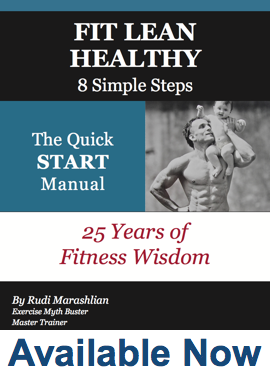 Losing weight implies a subtraction of some kind – you want to subtract body weight (preferably body fat) – and there are several different ways to go about it; one is through diet which means subtracting calories from your food intake. That’s what low-calorie diets do, you eat fewer calories (calories measure the energy value of foods) to try to reduce your body fat percentage. Basically what this means is that you input less energy (food) so that your energy output is greater than the input.
Losing weight implies a subtraction of some kind – you want to subtract body weight (preferably body fat) – and there are several different ways to go about it; one is through diet which means subtracting calories from your food intake. That’s what low-calorie diets do, you eat fewer calories (calories measure the energy value of foods) to try to reduce your body fat percentage. Basically what this means is that you input less energy (food) so that your energy output is greater than the input.
Sounds simplebut there are quite a few variables to being able to lose weight, one of which is your metabolic rate. A fast metabolism means you burn energy (measured in calories) quickly. A slow metabolism means you burn it slowly. It’s easier to put on weight if you have a slow metabolism because your body isn’t burning the calories you’re eating fast enough and so stores them, eventually, as fat.
Dieting actually slows down your metabolism and so make your body more likely to get fat. Sounds like a horror story but it’s true. Read on for the top four factors that slow metabolism and make people fat. Don’t worry, there’s also a solution for what you can do to combat them once and for all.
- DIETING: Eating too few calories for too long will result in loss of muscle (the body will eventually start breaking down muscle tissue in order to get the energy to survive) and a slowed metabolism. The other thing that can happen with dieting is that the body, realizing it’snot getting the calories its usedto, goes into an ages old “starvation mode” and slows down metabolism to save as much energy as possible just in case the shortage of food continues long-term (as was the case centuries ago when humans had less control of their environment than they do today).
- AGING: Once the body reaches full maturity (about twenty years of age) there is a gradual loss of muscle tissue each year, adding up to about 10% every decade and accelerating around the ages of sixty to seventy. With this muscle loss comes a slower metabolism which is why so many people complain that it’s harder to lose weight as they age.
- EXCESSIVE AEROBIC EXERCISE: Overdoing aerobic exercise will eventually eat into muscle tissue, especially in those parts of the body that are not being moved much during the exercise. For example, you’ve probably seen long-distance runners with small upper bodies, that’s because the arms and chest are not used particularly during long-distance running. Don’t forget, loss of muscle tissue will result in a slower metabolism.
- INACTIVITY: If you have a sedentary job, are not active generally or you are bed-ridden due to illness or injury you will lose muscle tissue and in turn slow down your metabolism. A great example of this is what happens to a broken leg in a few short weeks of inactivity – the muscles whither and the broken leg becomes significantly smaller and weaker than the healthy one.
What do each of these four factors have in common? Loss of muscle tissue. Muscle is the energy burning powerhouse of your body; the more you have, the faster you’ll burn calories. Muscle cells burn about three times as many calories as fat cells!
Exercise increases metabolism naturally. Strength training (using machines, free-weights and your own body weight) is very important to this process because it is all about increasing muscle tissue. Knowing how to do strength training correctly and actually doing it regularly is one big way to guarantee you keep your metabolism going and ensure your body becomes and remains a calorie-burning machine.


